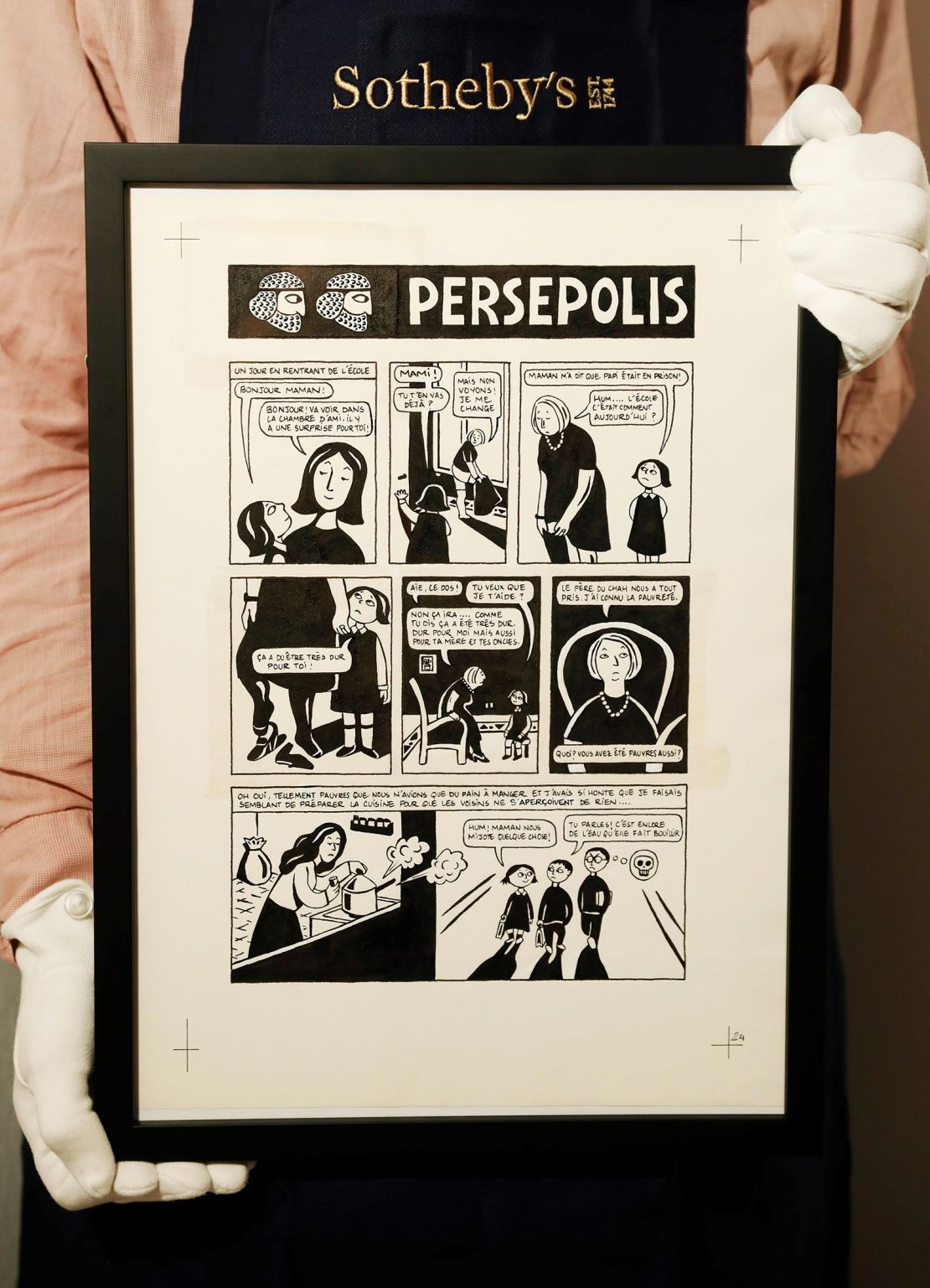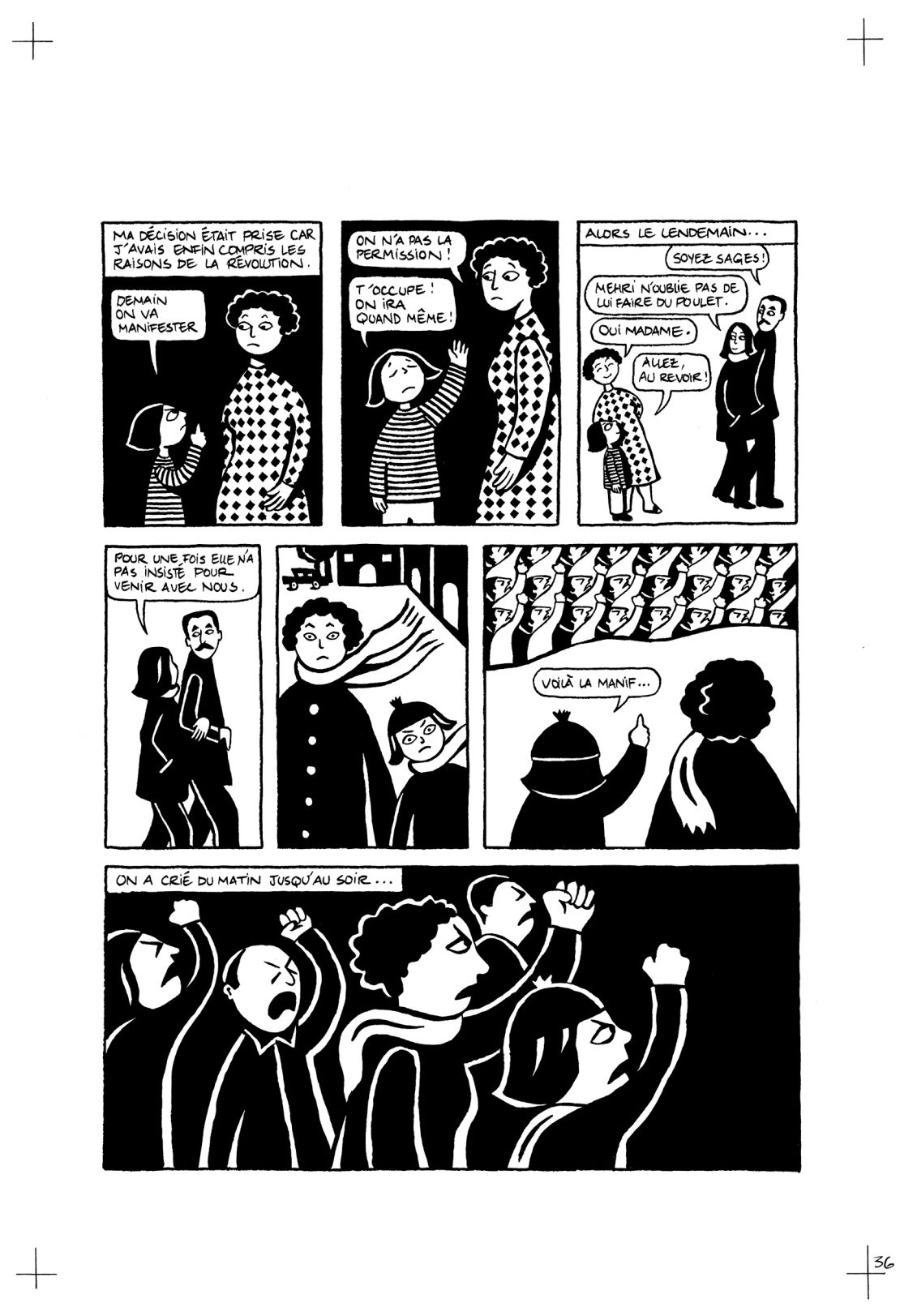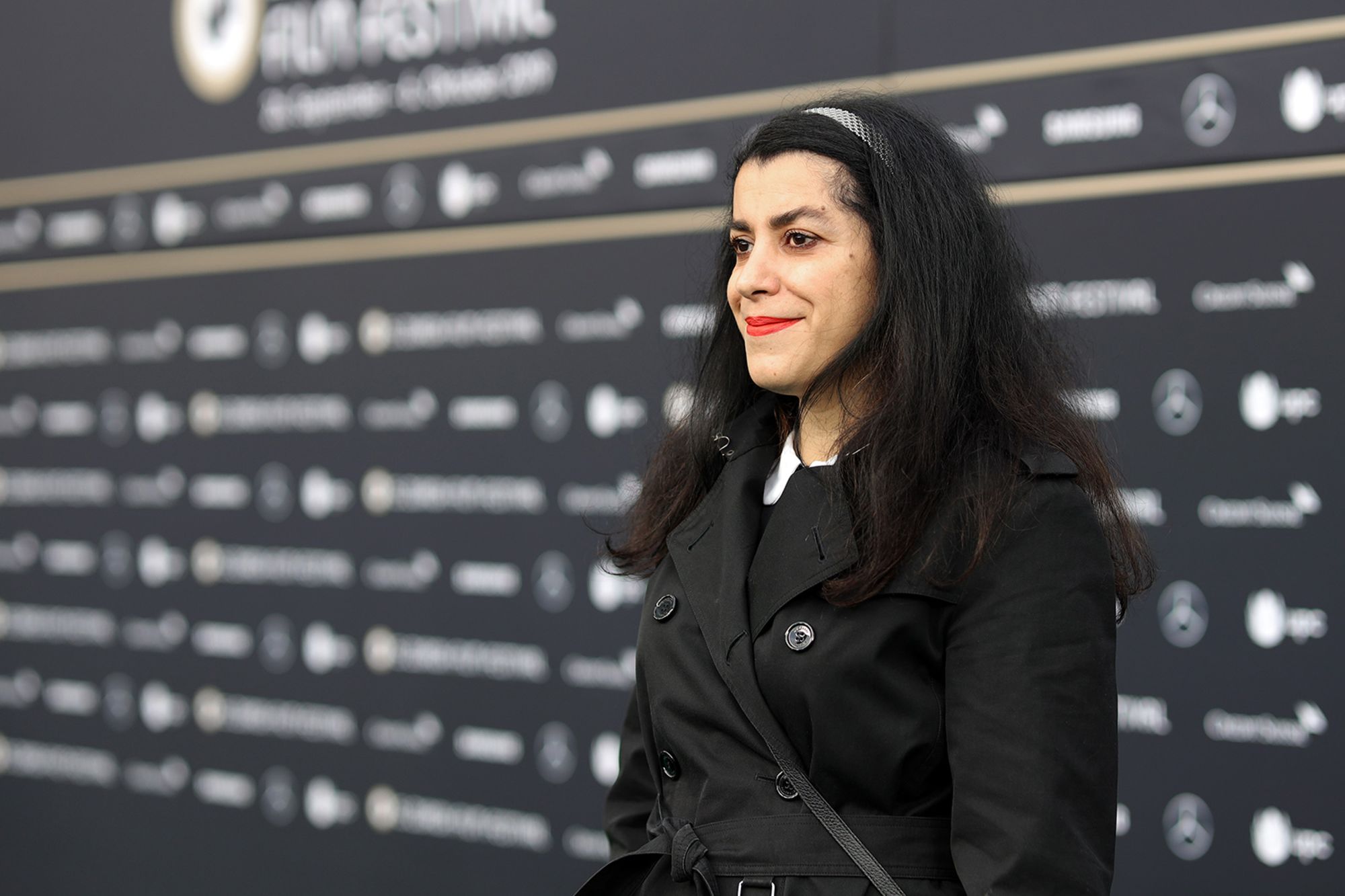Iranian-French artist Marjane Satrapi was 10 when wearing the veil became compulsory at the non-religious, French-speaking school she attended in Tehran. Previously, boys and girls were taught together, but she was soon also separated from her male friends in the name of a cultural revolution instigated by revolutionary leader Ayatollah Ruhollah Khomeini.
Women’s rights were restricted almost instantly after 1979: Overnight, they lost the right to seek a divorce and the opportunity to retain custody of a child. A public dress code was introduced mandating the veil, while the age of marriage for girls plummeted from 18 to 9 years old. Confused, frustrated and yet defiantly playful as kids are, Satrapi remembers her and her female classmates removing their veils and tying them together to make a skipping rope during recess. This scene is how “Persepolis” (2000) – Satrapi’s graphic novel memoir tracing the historic installation of the Islamic Republic through the complex prism of childhood – opens.
The work won the Angoulême Coup de Coeur Award, France’s national comic prize, in 2001 and became a Cannes Jury Prize-winning feature-length film in 2007. This week, the first 44 pages of Satrapi’s original manuscript are to be auctioned – in 44 separate sales – at Sotheby’s in London.

Some 450 seminal South Asian, Islamic and Middle Eastern works go under the hammer this week as part of Sotheby’s “Middle East Week,” with “Persepolis” set for sale on October 25. The auction series comes at a time when the world’s eyes are on Iran, as the country enters its sixth week of protests and unrest following the death of Masha Amini – a 22-year-old who died after officials in Tehran took her to a “re-education center” for allegedly not wearing her hijab properly.
Had Satrapi been able to foresee the circumstances, she “would never have auctioned it now,” she told CNN in a telephone interview ahead of the event. “Otherwise I would be a very cynical person. (Preparation for this) sale has been going on for more than six months.”
The auction house estimates each page of “Persepolis” at between £4,000 and £6,000, or approximately $4,500 to $6,700. Satrapi plans to use the proceeds raised to fund a new, as-yet undefined film project (“it changes every day,” she explained). She believes selling the manuscript – which has been wrapped in her wardrobe for the last 20 years – will be cathartic. “It felt like a monster in my closet,” she said. “It had to go.”

Yet despite the graphic novel being more than two decades old, it remains all too relevant. Written from the perspective of Marji, Satrapi’s childhood self, “Persepolis” grapples with coming of age under a dictatorship. From participating in demonstrations against religious extremism and secret prohibition parties to mourning the death of her uncle Anoosh, who is executed for “spying,” the personal becomes political as Marji’s formative years are entwined with the Islamic revolution.
On the ground in Iran today, the average age of protestors arrested for demonstrating is just 15. Many as young as 16 have also been reportedly killed by Iranian security forces. To Satrapi, “Persepolis” was a kind of “testimony” both of what happened during the overthrow of the Pahlavi dynasty, the Iranian monarchs who had ruled for over half a century, but also of the beauty and humanity of her country in the years before. “When I came to France, people had a (misinformed) idea about what Iran was,” she said. “(They thought) Iran was a country that had existed since 1979, but it’s not true. It’s a country with a history of 4,000 years. It wasn’t born yesterday, but people forgot that. So (“Persepolis”) was really my answer to that. But I was sure it would be obsolete after a few years.”
For Satrapi, the parallels between her life in Iran over 40 years ago and the turbulent events playing out today feel bittersweet. “It’s a mixture of joy and sadness. Sadness because, again, we have to lose our kids. And joy because the culture has changed,” she told CNN. “This is the first feminist movement that I know of in the world where the women are bringing the men (to protest) with them. They are behind these girls, they’re all united. It really is a human rights movement. It has become a global movement of the youth against archaism, of democracy against dictatorship.”
Top image: Marjane Satrapi at the 15th Zurich Film Festival in 2019.
